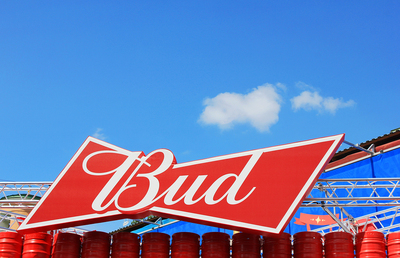
Does merely seeing this ad increase a child’s risk of alcohol use?
The tobacco market is well known for its dubious history of marketing to kids. But it’s far from the only threat to children when it comes to marketing and unhealthy lifestyle choices. In fact, newly published research in the academic journal BMJ Open reveals a troubling link between alcohol marketing and alcohol consumption in children. Here’s a closer look at these alarming findings.
Awareness = Higher Risk
A partnership by the UK’s University of Stirling and the Cancer Policy Research Centre at Cancer Research UK set out to explore the degree to which awareness of alcohol marketing and ownership of alcohol-branded merchandise in 11 to 19-year-olds in the UK impacted their consumption, high-risk drinking, and susceptibility.
The findings were eye-opening. Current adolescent and young adult drinkers who fell into the “high alcohol marketing awareness” category were 1.4 times more likely to be higher-risk drinkers than their low- to medium-awareness peers. Furthermore, in the group of young people who had never consumed alcohol, those who owned alcohol-branded merchandise were two times more likely to drink in the subsequent year.
Underscoring the problem is that a staggering 82 percent of the young people surveyed reported having seen at least one form of alcohol marketing in the month leading up to the survey, and at least half of these said they’d seen 32 or more instances — in other words, at least one form of alcohol marketing a day. Of all of those surveyed, a fifth said they owned alcohol-branded merchandise.
Study leader Dr. Nathan Critchlow told Science Daily of the findings, “Alcohol marketing is more than advertising; it exists in many different forms — more commonly known as the marketing mix — and we found this was reflected in what young people recalled. More than a third of young people recalled seeing alcohol advertising through television, celebrity endorsement, and special offers in the week before they participated in the survey, while more than a fifth recalled seeing outdoors adverts or adverts on social media.”
Beyond the Usual Risk Factors
There are several commonly known risk factors for adolescent alcohol use, abuse, and dependence, according to the National Institute on Alcohol Abuse and Alcoholism. These include genetic risk factors, including biological markers, childhood behavior, psychiatric disorders, and suicidal behavior. Additionally, there are psychosocial risk factors, including parenting, family environment, and peers; positive expectancies about alcohol; and child abuse and trauma. While advertising has been considered to be a risk factor, research was until now limited. This first-of-its-kind study indicates that there’s truth in what experts have long posited.

A beer commercial may seem happy and harmless, but research reveals that exposure to alcohol marketing can lead to consumption and substance abuse.
“Although alcohol consumption can be influenced by a variety of factors, we found that the association between alcohol marketing and increased consumption and higher-risk drinking in current drinkers remained even after controlling for a range of demographic and confounders, such as parental and peer drinking. This was also true for the association between owning branded merchandise and susceptibility in never-drinkers,” continued Dr. Critchlow.
Alcohol use in young people in and of itself is a problem. However, it must also be acknowledged that alcohol use is known to cause several different kinds of cancer, including mouth, breast, bowel, liver, pharyngeal, esophageal, and laryngeal. Even worse? That only a very small proportion of the population is aware of this link.
Key Takeaways
The research suggests several key takeaways underscoring just how susceptible young people are to these external influences. For starters, they’re very aware of how often they see alcohol marketing. This increased awareness directly translates to increased use, as does ownership of alcohol-branded merchandise.
In addition to parents stepping up measures in their own household to reduce exposure, these findings also indicate the need for heightened controls for alcohol marketing. “Our findings lend support to these steps to examine further feasible, appropriate, and effective ways of reducing exposure in young people,” concluded Dr. Critchlow.
In the case of young people who are already struggling with substance abuse and addiction, meanwhile, the importance of targeted treatment cannot be overstated — both in terms of supporting recovery and preventing the many complications related to alcohol use. Contact us at Harris House today to learn about our substance abuse treatment programs.







